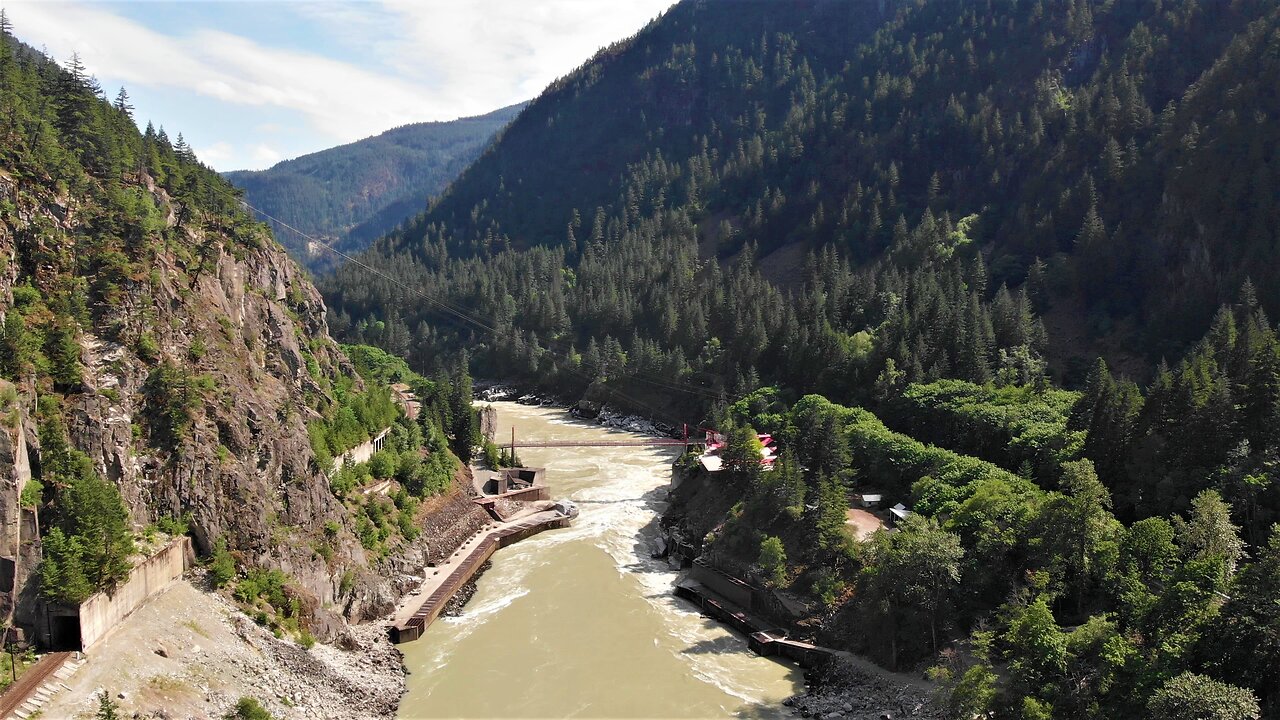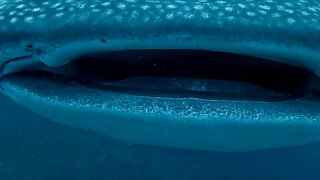Premium Only Content

This treacherous pass was "The Gates of Hell" according to early explores
Hell's Gate lies at the bottom of a steep canyon carved out of the mountain by the Fraser River in British Columbia, Canada. It is the narrowest portion of the mighty Fraser River, originally known by other names. The Tsilhqot'in name for the river is ʔElhdaqox, meaning Sturgeon. The river is home to gigantic sturgeon that feed on the bottom in slower running sections, but the river is also Canada's greatest source of salmon and the Indigenous peoples who inhabited this nation first relied on the salmon for their survival.
This strikingly beautiful section of the Fraser River has a fascinating history. At these narrows, the current rages through a steep canyon, making it impossible for boats to navigate the river. Indigenous people gathered here to harvest salmon as the fish rested in the eddies before continuing upriver. The rapids and steep banks made it a treacherous and dangerous area to fish, yet the opportunities to catch the salmon were plentiful. Rope and wooden structures helped the local fishermen make their way along the sheer rock faces to fish.
In the middle and late 1800s, European settlers began to gather and fish here. The gold rush and fur trade brought even more settlers and people passing through. This area became a busy trade corridor. A railway was built and the area saw more traffic and people than ever before. In 1911, a second rail line was built along the south and east bank of the Fraser River.
During construction of the second rail line, a catastrophic rockslide poured huge boulders into the river. This decreased the depth by 5m (15 feet), increasing water velocity by more than a third. Very few salmon made it through and they perished in the attempt, before spawning, or they found other rivers to spawn in.
The salmon populations plummeted. Commercial fishing was already putting heavy pressure on the salmon and the Indigenous people faced famine. Fishing restrictions were put in place, but commercial fishing continued in the areas south of Hell's Gate. Intense debates raged over the causes and the solutions, with harsh criticism from many angles.
From 1947 to 1951, two corridors were built along the banks of the river. These structures created tunnels with reduced current, allowing the fish to pass through and avoid the worst of the turbulence. Other conservation efforts were also put in place. As a result, salmon populations rebounded.
In the 1970s, an airtram was built to allow people to traverse the river and view the fishways from both banks. The site hosts a restaurant, giftshop, along with educational films and plaques to explain the history of this canyon.
The Fraser River is named after the explorer, Simon Fraser. He wrote in his journals that this passage was: "a place where no human should venture, for surely these are the gates of Hell." It was known thereafter as Hell's Gate. Without the benefit of roads or rail lines, explorers were forced to find a way through these treacherous and dangerous waters.
What was once seen as a foreboding and treacherous place is now appreciated for its magnificent beauty and interesting history. It is also an undeniable demonstration of the potential consequences of human intervention in our attempt to battle or conquer nature.
-
 1:40
1:40
WildCreatures
1 month ago $0.63 earnedWhale Shark Most Extreme Close Up Imaginable
4.62K10 -
 1:28:21
1:28:21
Glenn Greenwald
5 hours agoRFK Jr. Hearing Reveals DC Pro-Pharma Consensus; Trump's Executive Order to Deport Student Protesters Criticizing Israel; Untangling DC Think Tank Funding & Influence | SYSTEM UPDATE #399
68.2K82 -
 1:23:44
1:23:44
Space Ice
6 hours agoSpace Ice & Redeye: Van Damme's The Quest: Pirates, Clowns, James Bond & Bloodsport
15.1K1 -
 59:57
59:57
The StoneZONE with Roger Stone
3 hours agoJ6 Martyr Enrique Tarrio Describes Inhumane Prison Conditions Ordered by Biden | The StoneZONE
15.1K -
 16:48
16:48
Tundra Tactical
3 hours ago $0.23 earnedAffordable Medical Gear From ACETAC SHOT Show 2025
9.47K1 -
 1:46:16
1:46:16
Redacted News
6 hours agoRFK CONFIRMATION: Kennedy goes to WAR with Big Pharma Democrats in Fiery Hearing | Redacted Live
156K317 -
 57:31
57:31
Candace Show Podcast
6 hours agoBREAKING! Taylor Swift Turns Against Blake Lively & Ryan Reynolds | Candace Ep 141
164K177 -
 1:04:59
1:04:59
Sarah Westall
3 hours agoRFK Jr Report, Constitution Suspended, War Time Procedures in Place, WHO Exit, DOD w/ Sasha Latypova
24.6K18 -
 1:56:37
1:56:37
Melonie Mac
7 hours agoGo Boom Live Ep 35!
35.8K11 -
 1:01:13
1:01:13
LFA TV
10 hours agoPRESIDENT TRUMP SIGNS LAKEN RILEY ACT | BASED AMERICA 1.29.25 6pm
49.5K6